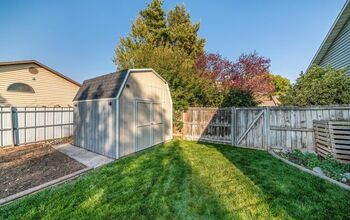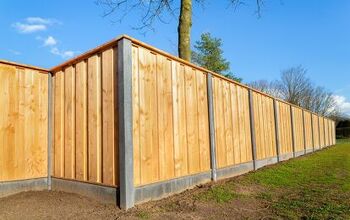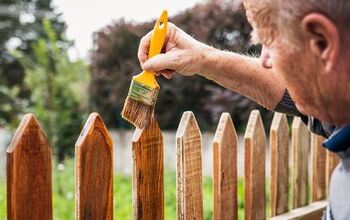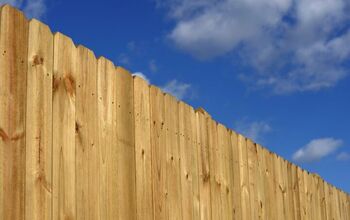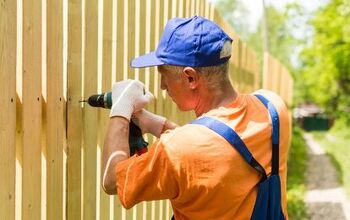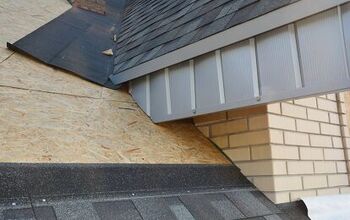What Is A Silt Fence? (Find Out Now!)

You’ve probably driven past a construction site and noticed a strange fabric fence surrounding the area. This fence is what’s known as a silt fence. Silt fences are unique in their design and purpose and where they’re used. Unlike other fences, silt fences are found mainly on and around construction sites.
A silt fence is a long-lasting, and durable fabric barrier used to protect water sources around construction sites. Construction often involves digging and moving dirt around, which can damage nearby water sources. Silt fences are erected to protect those water sources from sediment and runoff due to rain or heavy winds.
Silt fences are meant to protect roadways and neighboring properties from dirt and runoff. They also have the ability to protect rivers, lakes, and ponds from dangerous runoff. This is especially important near fresh-water and drinking water sources. Silt fences are mandatory in certain areas when construction or excavating is going on.
Do You Need Minor Grading or Resloping Services?
Get free, zero-commitment quotes from pro contractors near you.

What is a Silt Fence?
Silt fences are temporary fences used to contain and protect certain pieces of property. They can keep dirt and runoff from getting into water sources and onto your neighbor’s property, which is likely to upset them. Silt fences are durable and long-lasting barriers, but they’re also eyesores and are meant to be temporary. They aren’t attractive fences and are only used for the service they provide.
Where are Silt Fences Used?
Silt fences are made of porous fabric, often called geotextile. This fabric is relatively lightweight and durable but is a definite eyesore. Silt fences are usually black, and they often hang or droop close to the ground as they’re often installed in a hurry and are only temporary.
Silt fences usually don’t come in multiple colors or styles because they’re only meant to be functional. There’s no reason to leave a silt fence installed once construction is complete and they are removed as quickly as possible. While construction sites are the main areas of use, silt fences can also be used around soil stockpiles, swale drains, spillways, and floodways.
Pros and Cons of Silt Fences
Here are some of the arguments in favor of and against silt fences.
Pros
Depending on where you’re performing construction or excavation, barriers are required to contain dirt. Silt fences are the cheapest and easiest installed fences to fulfill these needs.
Lightweight and Easy to InstallSilt fences are made of lightweight fabric that is easy to install. Digging post holes is the hardest part, and if you can handle that, you’re good to go.
Durable and Long-lastingDespite being made out of fabric, silt fences are reasonably durable and will last the length of your construction. They won’t last forever, but as long as your project is less than a year, one silt fence should last the duration of your construction project.
VersatileThere are three basic kinds of silt fencing that will accommodate any construction. They’re all installed the same way, so if you’ve used one silt fence, you can handle them all.
ReusableYou can use it for multiple projects as long as you don’t beat up on your silt fence too much. This is one of the main reasons why silt fences are the choice fences on construction sites.
Cons
Silt fences aren’t exactly beautiful in their design or installation. They’re meant for the purpose of dirt containment and property protection, and that’s all. They’re usually made of a black fabric that becomes slack over time.
Can’t Handle Heavy LoadsSilt fences are sturdy for what they are, but they have limitations. If there is intense flooding or a large amount of dirt propelled against the silt fence, it likely won’t hold up. They’re installed quickly and made to be removable at a moment’s notice.
Requires Frequent MaintenanceThe longer your silt fence is left standing in one place, the more maintenance it will need. They weaken and sag over time and constantly need to be strengthened and re-supported.
Don’t Work Well on Steep Hills.Putting your silt fence on the side of a steep hill or at the bottom of it is a recipe for disaster. It will likely encounter a rock or dirt slide, which is guaranteed to collapse your fence.
Must be Installed ProperlyIf a silt fence isn’t installed correctly, it’s guaranteed to fail. I’ll explain the proper way to install a silt fence in a moment.
What are Silt Fences Made of?
Silt fences are made of a porous fabric known as a geotextile fabric. There are varying thicknesses of silt fences, but they are all designed with pores to combat high winds.
Can I Install My Own Silt Fence?
Installing a silt fence is hard work, but it’s definitely possible with the right tools and knowledge. If you’re a DIYer and you want to save some money on a construction project, installing your own silt fence is a great way to do it.
Dig the Holes for the Stakes or Posts
You should use steel posts or solid wooden ones that are five to six feet apart. Use a tape measurer to properly space out your posts and ensure that they’re at the proper distance from each other. Measure out where each of the posts must go and dig your holes accordingly. The holes should be at least 20 inches deep to offer the posts some sturdiness.
Install the Posts
With the holes dug, install the posts and pack them in tightly. Make sure that they’re standing straight up and are solidly in place.
Attach the Fence
The hard work is done, so now comes the technical part. To attach your silk fence to the posts, use zip ties or another kind of heavy-duty fastener. Attach the fence to the posts in at least three places, one high, one low, and one in the middle. Make sure that the fence is pulled tight and taut as you attach it to the posts.
Do You Need Minor Grading or Resloping Services?
Get free, zero-commitment quotes from pro contractors near you.

Related Questions
How much does a silt fence cost?
Silt fencing is relatively cheap, and you’ll likely pay more for the posts and the fasteners than the fencing itself. A 50-foot roll of silt fence costs anywhere from $15 to $25. The project’s total cost is anywhere from $200 to $1000, depending on how much fencing you need.
How long does a silt fence last?
If properly maintained and protected, a silt fence will last around one year.
Final Thoughts
Silt fences are handy and easy to install when you need them. They’re the perfect option for construction sites that need to keep dirt and sediment from getting into the water and neighboring properties. While they aren’t things of beauty and won’t last forever, they’re the perfect temporary solution.

Before I started writing, I worked for 6 plus years in the plumbing, electrical, and HVAC business. I was primarily an HVAC installer but also worked as a plumber and electrician. Now I'm a copywriter, focusing on home improvement content and guides.
More by Jalin Coblentz




